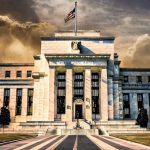Surprising Predictions: Sorting Truth from Wolf Cries and Hogwash
Jan 7, 2025
Introduction: Experts Keep Crying Wolf?
Could a sudden plunge in 2025 blindside complacent investors? The market is no stranger to speculative frenzies and knee-jerk sell-offs, but let’s call out the real culprits: so-called “experts” who pull theories out of thin air, spinning doomsday narratives to stay relevant. When you break it down, the word expert might as well mean EX-Spurt—a burst of hot air that never delivers. They’re like the Big Bad Wolf, full of huff and puff but incapable of blowing the house down.
Here’s the truth: the ingredients for a crash just aren’t there. Our proprietary Anxiety Gauge—a proven measure of market sentiment—shows no signs of excessive optimism. Bullish sentiment is languishing well below its historical average of 38. For all the buzz about an imminent disaster, the data tells a different story.
Yes, a monumental crash will come someday, but not now. This “crash of 2025” narrative is just another round of fear-mongering to distract investors. Stay focused, follow the data, and ignore the noise from the so-called experts.
History Repeats, Experts Exaggerate: The Cycle of Fear and Hype
A glance at financial history reveals a timeless truth: market crashes are as inevitable as the overblown predictions that precede them. The dot-com bubble of the late 1990s is a prime example. Enthusiasm over internet stocks reached euphoric levels, convincing the masses that the old rules no longer applied. Modest dips were ignored as fortunes grew at dizzying speeds—until 2000, when the bubble burst, obliterating wealth in months. Fast-forward to 2008: skyrocketing property prices and unshakable confidence painted a different cautionary tale. Once subprime mortgages collapsed, the ensuing panic erased trillions in value.
The chatter about a “crash in 2025” reeks of the same recycled fear-mongering. Experts trot out familiar concerns—rising debt, geopolitical tensions, overvalued tech stocks—and back their claims with an avalanche of cherry-picked data. But let’s face it: predicting a crash’s exact timing and cause is as futile as expecting a broken clock to tell time suddenly. These experts make big noise, but their track record is laughably inconsistent.
The truth is simpler and less dramatic. Market cycles are natural, and the current landscape—characterized by innovation, strong corporate earnings, and global liquidity—lacks clear warning signs of an imminent collapse. Yes, history shows that overconfidence can lead to disaster, but it also teaches us that fear sells headlines.
So, instead of falling for the same tired narratives, investors should focus on what truly matters: sentiment analysis, technical signals, and maintaining a disciplined approach. The markets are neither as fragile nor doomed as the doom prophets would have you believe. Ignore the noise and stay the course.
Mass Psychology and the Snake Oil of Crash Predictions
Financial markets are shaped less by hard data and more by the emotional tides of group sentiment. Whether rooted in excitement or fear, mass psychology can send prices soaring beyond reason or crashing without justification. When talk of a 2025 market collapse dominates headlines, it’s essential to recognize the power of collective belief. If enough people act on the idea of an inevitable crash, their actions can bring it to life. But remember this: even a broken clock is right twice a day, and that doesn’t mean it’s a reliable tool for navigating markets.
Experts have been screaming about crashes for years, often long before any real downturn occurs. If you listened to them, you’d be bankrupt several times over. The truth is, no one knows the exact timing of a market collapse. What matters is spotting genuine warning signs and preparing accordingly—not being swayed by loud, baseless predictions.
Modern technology has only made things worse, giving self-proclaimed experts a megaphone to amplify their snake-oil forecasts. Social media spreads rumours faster than traditional news ever could. A single influencer’s tweet or a viral post can create unnecessary panic, especially when it feeds into fears of a “2025 crash.” But here’s the catch: it’s not about whether these predictions hold a sliver of truth—it’s about timing. Most of these doomsday forecasts are rubbish, timed for maximum sensationalism and devoid of actionable insight.
Pay attention to the signals, not the noise. When ordinary folks start casually chatting about spectacular returns or apocalyptic collapses, the market may be nearing an emotional tipping point. Whether it results in a genuine meltdown or a temporary exaggeration depends on the underlying mental state of the participants. Ignoring this psychological factor is a rookie mistake.
For now, the facts simply don’t support the hysteria. Recognizing the behaviour of crowds and the manipulative power of expert-driven rumours will keep you ahead of the noise. The “crash of 2025” narrative is just that—a narrative. Stay grounded, stay informed, and don’t let fear sell you on fiction.
Behavioural Finance: The Biases That Wreck Portfolios
Mass psychology may sway markets, but individual biases are the engine of collective errors. Behavioural finance exposes the quirks and blind spots that make even seasoned investors fall prey to disastrous mistakes. Overconfidence, confirmation bias, and loss aversion drive poor decisions, especially when fear or greed take the wheel. While talk of a 2025 crash persists, the mass psychology indicators suggest it’s premature. Yes, sectors like AI and BTC are frothy and poised for corrections—BTC, in particular, is likely to spike before plunging. However, the ingredients for a full-scale market meltdown remain absent.
Overconfidence: Mistaking Luck for Skill
Overconfidence is the Achilles’ heel of many traders. Imagine someone riding high on a streak of tech-stock gains. They mistake good fortune for genius, believing they can outsmart the market. When whispers of a crash surface, they dismiss them, doubling down instead. Confidence is vital for success, but unchecked overconfidence blinds investors to early warning signs. If the market turns south, this arrogance can lead to catastrophic losses.
Confirmation Bias: The Echo Chamber Effect
Hand in hand with overconfidence comes confirmation bias. Investors gravitate toward information that aligns with their beliefs, ignoring evidence to the contrary. Someone convinced of a 2025 crash will scour Twitter and blogs for doom-laden predictions, while sceptics dismiss even valid warnings. This selective blindness leaves investors vulnerable and deaf to contrarian views that could help them anticipate or navigate market shifts.
Loss Aversion: The Paralysis of Fear
Loss aversion is another pitfall, warping decisions when prices tumble. Many investors fear losses more than they value gains. During the 2008 crisis, some clung to free-falling assets, praying for a rebound. Others panicked, selling at the bottom. If markets wobble in 2025, we may see the same story: discipline abandoned, portfolios gutted. Without clear exit strategies, investors risk amplifying losses through emotional trades.
The Solution: Awareness and Preparation
The good news? Knowing these biases exist helps mitigate them. Journaling trades, setting stop losses, and sticking to predefined rules are proven ways to stay rational when emotions flare. It’s especially crucial as ominous predictions circulate. Fear and greed will always be part of the market landscape, but neither should dictate your strategy.
For now, the doomsday chatter lacks substance. Bullish sentiment remains far below the critical threshold of 60, which would signal euphoric extremes. The psychological groundwork for a crash simply isn’t there yet. Stay vigilant, but don’t let snake-oil predictions derail your strategy. Instead, focus on the fundamentals, monitor sentiment trends, and remember: the market is a battlefield, but your mind is the ultimate weapon.
Technical Analysis: Reading the Market’s True Tone Amid the Noise
Technical analysis offers a calmer, data-driven perspective amid a storm of sensationalist headlines. While not foolproof, it provides critical clues to assess whether fears of a 2025 market crash hold substance or are merely the latest iteration of doom-laden hype. The charts don’t lie, even if the experts do. If a meltdown is truly brewing, the market’s structure—its moving averages, volume trends, and momentum indicators—will likely provide early warnings.
Take the financial crisis of 2007–2008. Before the crash became front-page news, technical signals such as broken support levels, elevated selling volume, and faltering momentum hinted at deep trouble in financial stocks. Similarly, during the dot-com bubble, the euphoric rise in tech shares showed unsustainable parabolic patterns, but only a few noticed the red flags—like institutional selling during shallow pullbacks. Those attuned to these markers often sidestepped the carnage.
In today’s environment, watch for signs like major indexes breaking below long-term moving averages or sector divergences—for example, tech racing higher while financials falter. If volume shows large players are quietly selling while retail traders buy the hype, it could signal trouble. Conversely, if prices continue to make higher and lower highs, the supposed “2025 crash” may be little more than media-fed paranoia.
Technical analysis isn’t perfect, especially in the face of sudden geopolitical or natural disasters, but it provides a reliable framework to evaluate panic claims. If charts contradict the hysteria, it’s a strong indicator to remain level-headed.
Contrarian Thinking: Profiting Where the Herd Fails
Markets reward those who think independently, and contrarian investing is the ultimate test of this principle. Whether it’s buying during periods of despair or selling in times of mania, contrarians thrive by challenging the herd’s collective bias. As fears of a 2025 crash circulate, the contrarian approach becomes invaluable—not as a reactionary stance, but as a method to separate fact from fiction.
History illustrates the power of contrarian moves. At the peak of the dot-com bubble in 2000, the herd blindly chased tech stocks under the assumption they could only rise. Contrarians sold into the frenzy, enduring ridicule until the collapse validated their skepticism. Likewise, during the depths of the 2008–2009 crisis, when panic ruled the markets, contrarians bought deeply undervalued stocks and reaped extraordinary gains during the recovery.
In 2025, contrarians will likely monitor whether public sentiment veers toward extremes. If mass panic takes hold without corresponding technical evidence, it might be time to buy into the fear. On the other hand, if euphoria dominates and stocks climb without pause, trimming positions or shorting certain overvalued assets could prove wise.
Contrarian thinking doesn’t mean opposing the majority for its own sake; it’s about maintaining clarity when others lose it. When hype screams upward, contrarians look for cracks in the foundation. When gloom dominates, they search for undervalued opportunities. As the chatter of a 2025 market collapse builds, remember that fear and greed are part of every cycle. The challenge—and reward—lies in rising above them to see the market’s true pulse.
A Forward-Looking Strategy: Cutting Through Fear and Fable
Is a stock market crash in 2025 a looming reality or just another manufactured storm designed to sow chaos? The blunt truth is that no one knows. Not the so-called experts, not the loudest commentators, and certainly not the opportunists peddling their latest crash-proof strategies. What history teaches us, however, is that the market’s rhythm is often more predictable than the noise surrounding it—if you know where to look and when to stay calm.
First, psychology rules everything. Forget earnings reports or GDP forecasts for a moment; when the herd feels unstoppable optimism or bottomless despair, they will push markets to unsustainable extremes. Recognising this dynamic is not optional—it’s survival. The crowd is never as brilliant as it seems during a bull run, nor as hopelessly doomed as it imagines in a downturn. Stay balanced when others run to extremes, and you’ll already be ahead.
Second, behavioral traps are waiting to destroy the careless. Overconfidence convinces the lucky trader that they’re a genius, while confirmation bias blinds the fearful investor to anything but doom-laden signals. Loss aversion will have you clutching falling assets like lifeboats, even as they drag you into the abyss. Ignore these traps at your peril—they repeat every cycle because people fail to learn. Plan ahead, map out your actions, and execute without emotion. The market doesn’t care about your feelings, but it will ruthlessly punish your mistakes.
Third, the charts speak louder than the headlines. While technical analysis isn’t infallible, it often tells the truth that hype obscures. If markets climb on thin volume, or if major sectors start diverging, the alarms should sound in your mind long before a crash becomes obvious. On the other hand, if the market continues forming higher highs, let the headlines howl—they’re nothing but echoes in an empty chamber.
Finally, contrarian thinking is your edge, but only if you use it wisely. When everyone talks about crashes like they’re certainties, consider whether panic has outrun reality. That’s where opportunity lives. Conversely, if every voice screams “buy” and dissent is nowhere to be found, recognize that the crowd is usually late to its own party. Take profits, step aside, and let gravity do its work.
The goal is not to dismiss 2025 crash talk but to strip away its emotional poison. Mass psychology always takes precedence over technicals; once the crowd commits to extreme fear or greed, the market reflects their actions. But for now, the warnings of an imminent meltdown lack substance. Signals are mixed, sentiment isn’t stretched to dangerous levels, and technical markers aren’t screaming collapse. The recipe for a disaster isn’t here—yet.
In the end, awareness beats anxiety every time. Let others panic; you have the tools to interpret the noise and act with precision. Whether the crash comes tomorrow or ten years from now, the prepared investor won’t just survive—they’ll thrive. Don’t be swept up by fear-mongering headlines or charlatans crying wolf. If the storm clouds darken, you’ll see it in the behavior of the crowd and the story the charts tell. Until then, remain calm, stay sharp, and remember: markets reward patience, not panic.











